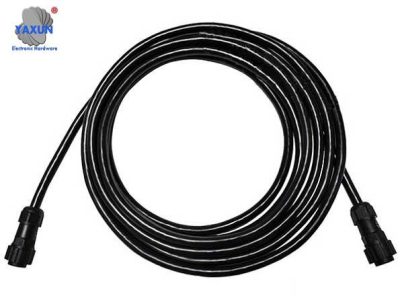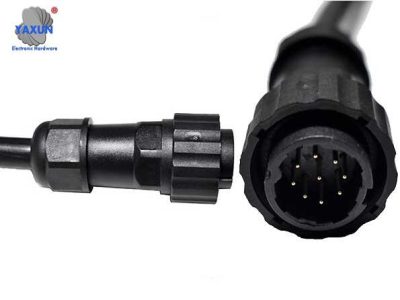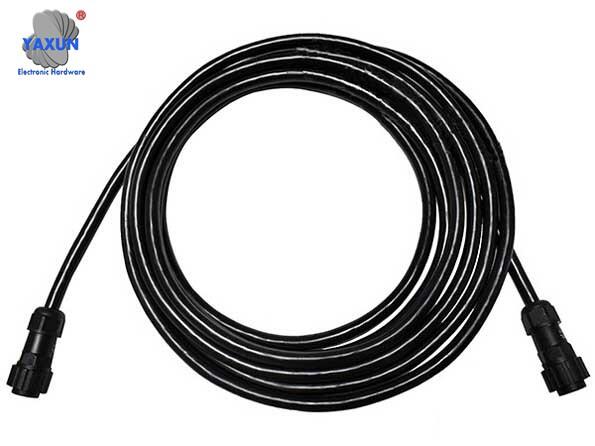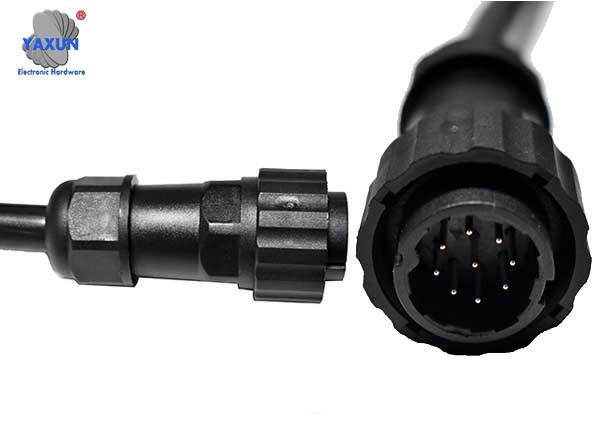Customize industrial power Amphenol wire harnesses to your drawings or sample requirements.
Fil: Ul;
Connectors: substrate terminals, connecteurs circulaires (Amphénol), tubular terminals;
Application: Internal and external wiring of industrial equipment;
Name: Industrial power wiring harness–Amphenol wiring harness;
Processing technology: riveting, assembly;
Whether to process and customize: Customize the length, specification, color, etc.. of the wire harness according to customer requirements;
Terminal pulling force: ≥22.3N
Connectors: substrate terminals, connecteurs circulaires (Amphénol), tubular terminals;
Fil: Ul
Withstand voltage: DC300V, 0.1 seconds;
Insulation resistance: ≥5 megohms
On-resistance: ≤3 ohms;
Performance du produit: The manufacturer selects high-quality materials and the product is highly flexible. It has the characteristics of acid and alkali resistance, résistance à l'huile, moisture resistance, mildew resistance, flame retardant resistance, se résistance à l'usure, résistance à la corrosion, antioxidant, étanche, dustproof, UV resistance, etc..
Product certification: Ul, IPC620, REACH, ROHS2.0, MASDS.
Company honors and qualifications: National High-tech Enterprise, Ul, IPC620, ISO9001, ISO14000, ISO13485, IATF16949, etc..

Faisceau de câbles Amphénol pour alimentation industrielle
Industrial wiring harness is an electrical connection system used to connect multiple electronic components, capteurs, switches and other electrical components together for signal transmission and power supply. It consists of a set of wires, câbles, and connectors that are insulated, protected, and bound to provide a safe, reliable electrical connection.
Industrial wire harnesses are widely used in modern manufacturing, especially in automobile manufacturing, aerospace, electronic equipment, mechanical equipment and other fields. They play a key role in these industries, connecting electronic components in various equipment and systems together to achieve signal transmission and power supply to ensure the normal operation of the equipment.

Faisceau de câblage pour outil électrique
Industrial wire harnesses can be classified according to different classification standards. Here are some common classification methods:
Functional classification: According to the function of the wiring harness, it can be divided into power wiring harness, signal wiring harness and hybrid wiring harness. The power harness is mainly used to provide power supply, the signal harness is used to transmit control signals and data, and the hybrid harness has both power and signal transmission functions.
Application classification: According to the application fields of wire harnesses, they can be divided into automotive wire harnesses, aerospace wire harnesses, mechanical equipment wire harnesses, etc.. Different industries have different requirements and standards for wire harnesses, so industry-specific needs need to be considered when designing and manufacturing wire harnesses.
Structural classification: According to the structure and wiring method of the wire harness, it can be divided into scattered wire harness and formed wire harness. Loose wire bundles are made up of individual wires and cables and are flexible in wiring for simpler applications. Formed wire harness refers to fixing wires and cables together through specific processes and equipment during the manufacturing process to form a predetermined shape and wiring structure, which is suitable for complex application scenarios.
Wire harness specifications: Wire harnesses can be divided into different types based on their size and specifications. The size of a wire harness depends on factors such as the number of wires and cables contained within it, its cross-sectional area, insulation materials, and other factors.
Environmental classification: According to the conditions and requirements of the wiring harness in the working environment, it can be divided into ordinary wiring harnesses and special wiring harnesses. The special wire harness has higher high temperature resistance, résistance à la corrosion, waterproof and dustproof properties, and is suitable for harsh working environments.
 English
English العربية
العربية Български
Български 中文(漢字)
中文(漢字) Čeština
Čeština Dansk
Dansk Eesti keel
Eesti keel Suomi
Suomi Français
Français Deutsch
Deutsch Ελληνικά
Ελληνικά עברית
עברית Magyar
Magyar Bahasa Indonesia
Bahasa Indonesia Italiano
Italiano 日本語
日本語 한국어
한국어 Latīna
Latīna Latviešu valoda
Latviešu valoda Lëtzebuergesch
Lëtzebuergesch Polski
Polski Português
Português Română
Română Русский
Русский Slovenščina
Slovenščina Español
Español Svenska
Svenska ภาษาไทย
ภาษาไทย Tiếng Việt
Tiếng Việt


